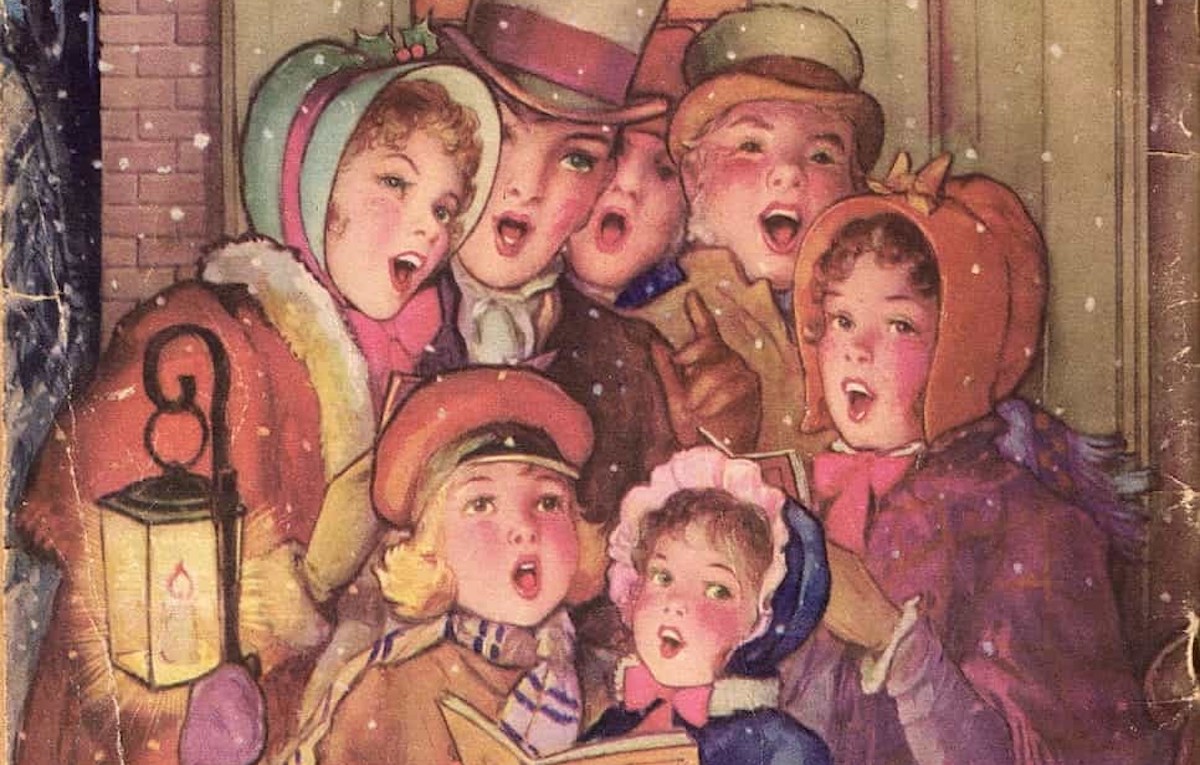Just before Christmas, the birthday of the Lord Jesus Christ, the practice of sending his messages from house to house through hymns (Carol) is celebrated in various parts of the world known as ‘Go Caroling Day’.
Meaning Of Carols
Carols mean Christmas songs. As Christmas approaches, the melody of light music starts to echo in the winds. The word carols are also believed to originate from the French word caroller, which means dancing. The oldest of the Christmas songs was came in the fourth century. Light-hearted and easy-to-sing melodies became popular in the 14th century. They were then heard in Italy. Most of the writing and development of Christmas carols and their fame came in the 19th century. Carrels are also known as Noel. In these songs, best wishes are given to the neighbors. It involves going to your neighbors’ house on Christmas and sitting with them and enjoying Christmas Carol.
History Of Christmas Carols

Carols were first sung in Europe thousands of years ago, but these were not Christmas Carols. They were pagan songs, sung at the Winter Solstice celebrations as people danced round stone circles. The Winter Solstice is the shortest day of the year, usually taking place around 22nd December. The word Carol means dance or a song of praise and joy! Carols used to be written and sung during all four seasons, but only the tradition of singing them at Christmas has really survived.
Christian songs instead of pagan
Christmas, celebrate the birth of Jesus, then started to be celebrated at the same time as the solstice, so the early Christians started singing Christian songs instead of pagan ones. In 129, a Roman Bishop said that a song called “Angel’s Hymn” should be sung at a Christmas service in Rome.
Another famous early Christmas Hymn was written in 760, by Comas of Jerusalem, for the Greek Orthodox Church. Soon after this many composers all over Europe started to write ‘Christmas carols’. However, not many people liked them as they were all written and sung in Latin, a language that normal people couldn’t understand. By the time of the Middle Ages (the 1200s), most people had lost interest in celebrating Christmas altogether.
Canticles that told the Christmas story
This was changed by St. Francis of Assisi when, in 1223, he started his Nativity Plays in Italy. The people in the plays sang songs or ‘canticles’ that told the story during the plays. Sometimes, the choruses of these new carols were in Latin, but normally they were all in a language that the people watching the play could understand and join in. The new carols spread to France, Spain, Germany, and other European countries.
The earliest carol, like this, was written in 1410. Sadly only a very small fragment of it still exists. The carol was about Mary and Jesus meeting different people in Bethlehem. Most Carols from this time and the Elizabethan period are untrue stories, very loosely based on the Christmas story, about the holy family, and were seen as entertaining rather than religious songs. They were usually sung in homes rather than in churches. Traveling singers or Minstrels started singing these carols and the words were changed for the local people wherever they were traveling. One carol that changed like this is ‘I Saw Three Ships’.
Must Read: CHRISTMAS SPECIAL: CHRISTMAS TRADITIONS IN POLAND
Christmas and singing carols were stopped
 When the Puritans came to power in England in the 1640s, the celebration of Christmas and singing carols was stopped. However, the carols survived as people still sang them in secret. Carols remained mainly unsung until Victorian times when two men called William Sandys and Davis Gilbert collected lots of old Christmas music from villages in England.
When the Puritans came to power in England in the 1640s, the celebration of Christmas and singing carols was stopped. However, the carols survived as people still sang them in secret. Carols remained mainly unsung until Victorian times when two men called William Sandys and Davis Gilbert collected lots of old Christmas music from villages in England.
Before carol singing in public became popular, there were sometimes official carol singers called ‘Waits’. These were bands of people led by important local leaders (such as council leaders) who had the only power in the towns and villages to take money from the public (if others did this, they were sometimes charged as beggars!). They were called ‘Waits’ because they only sang on Christmas Eve (This was sometimes known as ‘watchnight’ or ‘wait night’ because the shepherds were watching their sheep when the angels appeared to them.) when the Christmas celebrations began.
Also, at this time, many orchestras and choirs were being set up in the cities of England and people wanted Christmas songs to sing, so carols once again became popular. Many new carols, such as ‘Good King Wenceslas’, were also written in the Victorian period.
New carols services were created and became popular, as did the custom of singing carols in the streets. Both of these customs are still popular today! One of the most popular types of Carols services are Carols by Candlelight services. At this service, the church is only lit by candlelight and it feels very Christmassy! Carols by Candlelight services are held in countries all over the world.
[video_ads]
[video_ads2]
You can send your stories/happenings here:info@religionworld.in









